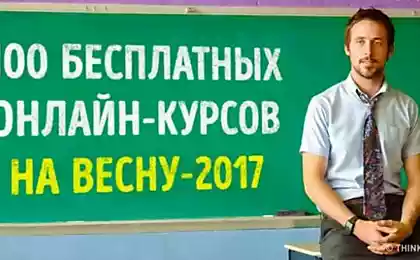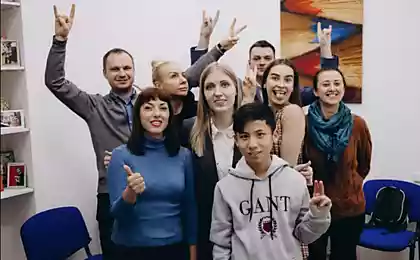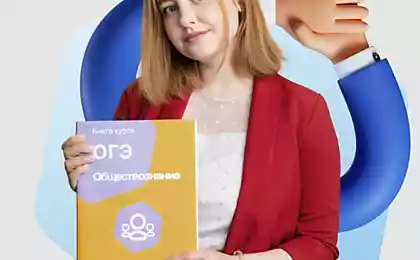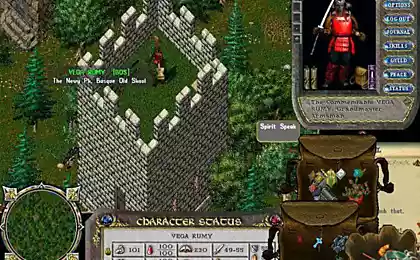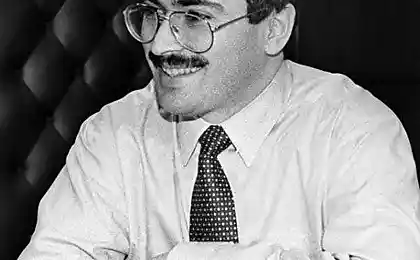1100
Interviews with teachers Coursera
Good afternoon. Many people know and enjoy the well-known platform for online education Coursera.org. I also belong to one of them. After a couple of courses, I became interested in the inner kitchen. I contacted several professors and asked them to give a written interview. About what happened, read on.
Questions are answered:
Berzon Nikolai I. , Professor, Doctor of Sciences. Course author «Financial markets and institutions» , Higher School of Economics.
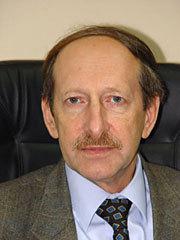
Paolo Prandoni, PhD. Together with Martin Vetterli is the course «Digital Signal Processing» from the École Polytechnique Fédérale de Lausanne

Jim Fowler , PhD. Together with Bart Snapp and Jenny George teaches courses «Calculus One» from The Ohio State University. He also is the author of the course «Calculus Two»

Ready? Let's go!
Why did you decide to do an online course? i>
Berzon NI. I read a similar course in the School of Economics, and when the university decided to enter the Coursera and record the number of courses, I said he was ready to take part in this business. I just could not imagine what got into)) In general, in Coursera not so easy to get. They checked a long time university teaching quality, and so on. And when they gave the go-ahead, then the management of HSE decided that we write 11 or 12 courses. Well, I said that he was ready.
Paolo Prandoni. We are fortunate to be in close contact with Daphne Koeller, when it launched Coursera, and we decided to contribute to the global world of free education, creating a course Signal Processing.
Jim Fowler. I want to see more people involved in mathematics. With the help of new, interesting, exciting knowledge, I want to draw a large number of students in mathematics, and it does not matter, they will deal with it for fun or professionally.
How closely in the process of the interaction with the staff of the Coursera? i>
Berzon NI. Almost nothing. We have an office (a teaching control), which took all the organizational issues on himself. I was laid only training materials, presentations, lectures and other things well. Coursera So I did not interfere.
Paolo Prandoni. is not very crowded. The platform, though not committed, is understandable.
Jim Fowler. Not too tightly when working on this course, though, I often talk to them about other things.
Tell us, how was training course. How many people were involved? How long did it take to record lectures and training test? I>
Berzon NI. I usually read the master's course in children who chose the specialty "Financial markets and institutions." I had only to adapt it to a lack of communication with the audience. I tried to place as much information on the slides, this is the first. Second, I understand that people can listen to, which will be far from the finance, so there are some simplified, without going into details that are important to professionals.
Paolo Prandoni. At first we prepared slides for video. Then we recorded voice that commented slides on Wacom. Finally, we recorded the introduction to the teacher for each lecture. Thus, the preparation of each lecture takes about 5 man-days.
Jim Fowler. I need about 10 hours to record one hour lectures, including editing. To make this possible, I have developed a «autocutter», which you can read on the githab . He copes with editing for us.
What are the difficulties you have experienced in the design of the course? Is there some kind of "test students' which took up running in the course of its public opening? I>
Berzon NI. In essence, the purely technical difficulties. For example, you can not come to the shooting in a striped shirt, a tie that can not been spotted.
Yet it was hard to adapt to the format of a lecture recording. Usually my lecture is one and a half hours, and the recording is fragments of 10-15, sometimes 20 minutes. And it was necessary to lecture divided into several blocks, each must bear a complete thought. That was difficult. But, nevertheless, everything turned out well.
"Test students" were not. We were able to control the recording of their placement. So, after recording video, I sent it to me. I looked, if I do not like something, then we rewrote it.
Paolo Prandoni Jim Fowler. At first, recording and editing were very difficult - it was a lot of cuts, but what we need to do, it was difficult to explain to another person (for example, "every second video is removed from the top down" since we remove a lot of mathematical content). Autocutter solved this problem.
No, we do not have a test audience. As far as I know, there is no easy way to do stuff on Coursera-only test group of students.
On the contrary, I consider MOOC-students as a "test" for the things that I wanted to do at the University of Ohio. I can run a great "educational experiment" in a MOOC, which could do "in reality," and we get a lot of interesting data on training Calculus.
On most courses a team consisting of lecturers and TA. How many people were on your team, how they are distributed between the roles? I>
Berzon NI. I helped Anna Petrikova, a graduate student of my department. Sergey Volodin - senior teacher of my chair.
Roles I certainly distributed, but then they are still mixed. Sergei, as he does slide well, I asked the lead presentations in a decent view. Also, Sergei accumulated questions posed on the forum. The questions, which he was able to give an answer, he replied, and the other sent me.
The task was to prepare Anna tests. I, of course, the tests were, I handed them to her, and she expanded them. For each week, we wrote 30 tests. She further elaborated them, then I looked through them again, something corrected and sent back. She accompanied them as automatic test sometimes faltered.
Paolo Prandoni. We have created a lecture by Martin. Then he drew five graduate students to work on homework, the two men were working on the video and the three TA support forum.
Jim Fowler. We ran this course three times in a row. At this time, Dr. Jenny George was the person in charge, so she looked through most of the video, written questions, respond to messages and made announcements. I like to work with the model of "benevolent dictator," when a person is constantly in full control and can change the course of it when it sees fit.
When we first placed a course I created a lot of content (such as the structure of the course, the scale and policy assessments), as well as wrote the backend is a modified code Khan Academy, integrated into our platform, built on algorithms, hidden Markov models and adaptive learning. Mathematical parser was written in JavaScript
Steve Gubkin developed exercises MOOCulus.
Bart Snapp led the writing of textbooks and record more video, when he led the course.
What are you guided by, making the structure of the course? i>
Berzon NI Paolo Prandoni. We have tried to make the course look like, as far as possible on the course at EPFL. The goal was to create a high-quality course on digital signal processing, which could be used both at the university and outside it.
Jim Fowler. This is a good question, I am an adherent of the old school. Some expect MOOC «modern" methods, but I do not think it is necessary to change the curriculum. Calculus One is presented only in the online video tutorial, and randomly generated questions, but the content is very close to the standard rate of AP Calculus AB. I hope many people will be able to re-use the course to achieve their goals.
The course lectures were published on a weekly. They are recorded as "on track" and everything was ready in advance? I>
Berzon NI About time. I have 9 lectures, about 1, 5 hours. Each lecture was recorded hours 4. Since some things had to be rewritten. Well, for example, when you lead a lecture and made a mistake somewhere, you can say, "oh, I'm sorry guys," to recover, and then drove off. Immediately you do not do
Paolo Prandoni. Most of the video lectures was ready before the course starts. They're too tight to write to write them on the go.
Jim Fowler
If the test tasks found a bug, there is an opportunity to correct it, perezachest test or remove it from the estimate does? i>
Berzon NI. It is somehow possible, but I do not know the details.
Paolo Prandoni. Yes, we can correct or delete the question.
Jim Fowler. , depending on the situation. If the error affects only the wording of a problem, it can be corrected without major difficulties. If the problem is the wrong answer, then it will be necessary to reduce the assessment of the test or does not take this into account in the final assessment test.
We know that participants receive certificates after some time. But the assessment of control are known in advance. Why is there a delay? Treatment is not automated? How is it going summarizing and formation of certificates? I>
Berzon NI Paolo Prandoni. Certificates preparing Coursera. We can not control this time.
Jim Fowler. We are looking forward to the moment when the last opportunity for someone to hand over the work has expired. That usually means a couple of weeks since the end of the final exam. Needless to calculate the final assessment takes several hours, and then we make sure the correctness of calculations, and then send a request for the production of certificates. Once the request is sent, too, there is a delay.
What are your personal impressions of this new format of teaching? What are the challenges and prospects MOOC do you see? I>
Berzon NI. It depends from what point of view. From the perspective of the University it is absolutely the right move. Because my course was over 16 000 people, and what else you can come up with a better PR for the University? And I thought that I would listen to the guys from Russia and CIS countries, and listened from America, Germany, Israel and France. For the University that he entered this global trend - it is absolutely the right strategic decision.
From the point of view of me as a teacher. First, it is hard to teach a course in the void. I do not see the audience, I can not see the eyes of students, I do not understand their reactions: they understand me or not. The teacher who lectures akin to an artist who performs on stage, and the artist, it is important that there was a full house. I, too, is important. I have a university lecture turns into a conversation, a discussion, a kind of discussion. I can tell the children: "Next week we will discuss bonds, I recommend you read the chapter so-so." This allows us not to tell the basics of lectures and switch problems. And then from scratch - it's hard. But then I used.
Second, physically uncomfortable to stand in one place while recording. After all, when I lecture, I animate it through the work with the board (paint formulas, graphs). But here everything is very static, it was hard. I offered to make a record of the time usually lectures, but as I was told it would be three times harder than the studio recording. In addition, it would require more hardware (for example, three cameras instead of one). Although, perhaps, someday I'll try and this format.
In general, a MOOC. Not long ago I read an article on the Internet German professor who writes that in 10-15 years there will be only the strongest universities are on the path MOOC. This will make the formation of high-quality, accessible and cheap. Indeed, why should I finish the third-school, if I can get knowledge from leading professors in the world? That's his forecast, not mine. But some truth in this. On a personal note, that, after all, verbal communication is necessary and students and teachers. Therefore, online courses are still not completely displace traditional learning format.
Paolo Prandoni. We think this is an excellent tool that can not replace universities but can give a lot of people to improve their skills and knowledge. It's a lot of work on the part of the teacher, but also a great reward.
Jim Fowler. I think that the best in this new format is a diversity of students. MOOC enriches people from all over the world, no matter where you live. As a result, there are more people who do math.
As a potential problem, I was very concerned about the high dependency on video. My favorite analogy is: teaching one-on-one is an amateur theater, while MOOC it's more like a movie or a TV. But the analogy extends further: to create video productions or we will need an actor. I do not want people watched more than math, I want them to be more concerned with her. I hope that the variety of online community will solve this problem. MOOC brings together a lot of people who want more together to study mathematics, so I'm not too worried. This is a promising trend.
Is there, in your view, just at the shortcomings of the platform Coursera? i>
Berzon NI. Verification test is done automatically, we were not allowed there. And sometimes there occurred some weird glitches. And incorrect answers were given for correct. We had to call and correct the situation.
Paolo Prandoni. The platform is not user friendly, as we've come to expect from many Web platforms. The work must be finished, but it's a gradual process.
Jim Fowler. , you can improve it. The best that can be Coursera is that we can obtain the data for the new development cycle. In this video I talk in more detail:
Do you have future plans connected with MOOC, if so, what? i>
Berzon NI Unfortunately, not everything depends on me here. I am waiting for the decision of the university. I would repeat the course. As on recurring issues in the forum I see that not everything I was able to intelligibly explain. Such fragments, of course, have to redo it. And I have ideas for another course.
Paolo Prandoni. We are considering cooperation with other universities to update and harmonize programs.
Jim Fowler. I want to do courses in geometry and topology.
What statistics course? i>
Berzon NI Paolo Prandoni. In the course of about 20 signed by 000 students, of which about 1000 will receive a certificate.
Jim Fowler. In the course of signed 185 021 students, of which 5% pass the exam.
One of the instructors (Kevin Werbach, a course Gamification , University of Pennsylvania) has refused to give an interview, but at the end of the course laid out a detailed statistical Video , short squeeze for those who want more numbers, under the spoiler.
Gamification subscribed - 78,351 students (81,600 in 2012, 66,438 in 2013). For 46% of the students this was the first course. 20% have left the course before it ends
169 countries (24% of students from the United States), that more than the last time (150 countries)
The sex composition: 62% of men (66% and 67% in the previous run)
77% already working. Of those studies, 83% have a bachelor's degree, 43% a master's degree.
The activity on the course. 51,341 (66%) have watched the entire course (usual rate of 50-60%). 10 593 topics on the forum was opened. Over 100,000 peer assessment of 6936 students was done.
On the results of the course. 61% complied with all p2p jobs, 75% written exam. Certificates (scored more than 70% points) got 4510 students is 5, 8% of the total (10, 1% in 2012, 8, 4% in 2013). These findings are consistent with other courses, and even look good. In general, successfully pass Coursera courses only 2-3% of the students.
I am constantly experimenting with the course, something to change depending on feedback. This launch was lengthened to 4 weeks (total duration of 10 weeks). With that I associate decrease in the percentage of successful passage.
The course will be edited and started again in the fall. I'm also working on Gamification Two.
P.S. Many thanks to my wife, for editing my rough translation.
Source: habrahabr.ru/post/223603/
Questions are answered:
Berzon Nikolai I. , Professor, Doctor of Sciences. Course author «Financial markets and institutions» , Higher School of Economics.

Paolo Prandoni, PhD. Together with Martin Vetterli is the course «Digital Signal Processing» from the École Polytechnique Fédérale de Lausanne

Jim Fowler , PhD. Together with Bart Snapp and Jenny George teaches courses «Calculus One» from The Ohio State University. He also is the author of the course «Calculus Two»

Ready? Let's go!
Why did you decide to do an online course? i>
Berzon NI. I read a similar course in the School of Economics, and when the university decided to enter the Coursera and record the number of courses, I said he was ready to take part in this business. I just could not imagine what got into)) In general, in Coursera not so easy to get. They checked a long time university teaching quality, and so on. And when they gave the go-ahead, then the management of HSE decided that we write 11 or 12 courses. Well, I said that he was ready.
Paolo Prandoni. We are fortunate to be in close contact with Daphne Koeller, when it launched Coursera, and we decided to contribute to the global world of free education, creating a course Signal Processing.
Jim Fowler. I want to see more people involved in mathematics. With the help of new, interesting, exciting knowledge, I want to draw a large number of students in mathematics, and it does not matter, they will deal with it for fun or professionally.
How closely in the process of the interaction with the staff of the Coursera? i>
Berzon NI. Almost nothing. We have an office (a teaching control), which took all the organizational issues on himself. I was laid only training materials, presentations, lectures and other things well. Coursera So I did not interfere.
Paolo Prandoni. is not very crowded. The platform, though not committed, is understandable.
Jim Fowler. Not too tightly when working on this course, though, I often talk to them about other things.
Tell us, how was training course. How many people were involved? How long did it take to record lectures and training test? I>
Berzon NI. I usually read the master's course in children who chose the specialty "Financial markets and institutions." I had only to adapt it to a lack of communication with the audience. I tried to place as much information on the slides, this is the first. Second, I understand that people can listen to, which will be far from the finance, so there are some simplified, without going into details that are important to professionals.
Paolo Prandoni. At first we prepared slides for video. Then we recorded voice that commented slides on Wacom. Finally, we recorded the introduction to the teacher for each lecture. Thus, the preparation of each lecture takes about 5 man-days.
Jim Fowler. I need about 10 hours to record one hour lectures, including editing. To make this possible, I have developed a «autocutter», which you can read on the githab . He copes with editing for us.
What are the difficulties you have experienced in the design of the course? Is there some kind of "test students' which took up running in the course of its public opening? I>
Berzon NI. In essence, the purely technical difficulties. For example, you can not come to the shooting in a striped shirt, a tie that can not been spotted.
Yet it was hard to adapt to the format of a lecture recording. Usually my lecture is one and a half hours, and the recording is fragments of 10-15, sometimes 20 minutes. And it was necessary to lecture divided into several blocks, each must bear a complete thought. That was difficult. But, nevertheless, everything turned out well.
"Test students" were not. We were able to control the recording of their placement. So, after recording video, I sent it to me. I looked, if I do not like something, then we rewrote it.
Paolo Prandoni Jim Fowler. At first, recording and editing were very difficult - it was a lot of cuts, but what we need to do, it was difficult to explain to another person (for example, "every second video is removed from the top down" since we remove a lot of mathematical content). Autocutter solved this problem.
No, we do not have a test audience. As far as I know, there is no easy way to do stuff on Coursera-only test group of students.
On the contrary, I consider MOOC-students as a "test" for the things that I wanted to do at the University of Ohio. I can run a great "educational experiment" in a MOOC, which could do "in reality," and we get a lot of interesting data on training Calculus.
On most courses a team consisting of lecturers and TA. How many people were on your team, how they are distributed between the roles? I>
Berzon NI. I helped Anna Petrikova, a graduate student of my department. Sergey Volodin - senior teacher of my chair.
Roles I certainly distributed, but then they are still mixed. Sergei, as he does slide well, I asked the lead presentations in a decent view. Also, Sergei accumulated questions posed on the forum. The questions, which he was able to give an answer, he replied, and the other sent me.
The task was to prepare Anna tests. I, of course, the tests were, I handed them to her, and she expanded them. For each week, we wrote 30 tests. She further elaborated them, then I looked through them again, something corrected and sent back. She accompanied them as automatic test sometimes faltered.
Paolo Prandoni. We have created a lecture by Martin. Then he drew five graduate students to work on homework, the two men were working on the video and the three TA support forum.
Jim Fowler. We ran this course three times in a row. At this time, Dr. Jenny George was the person in charge, so she looked through most of the video, written questions, respond to messages and made announcements. I like to work with the model of "benevolent dictator," when a person is constantly in full control and can change the course of it when it sees fit.
When we first placed a course I created a lot of content (such as the structure of the course, the scale and policy assessments), as well as wrote the backend is a modified code Khan Academy, integrated into our platform, built on algorithms, hidden Markov models and adaptive learning. Mathematical parser was written in JavaScript
Steve Gubkin developed exercises MOOCulus.
Bart Snapp led the writing of textbooks and record more video, when he led the course.
What are you guided by, making the structure of the course? i>
Berzon NI Paolo Prandoni. We have tried to make the course look like, as far as possible on the course at EPFL. The goal was to create a high-quality course on digital signal processing, which could be used both at the university and outside it.
Jim Fowler. This is a good question, I am an adherent of the old school. Some expect MOOC «modern" methods, but I do not think it is necessary to change the curriculum. Calculus One is presented only in the online video tutorial, and randomly generated questions, but the content is very close to the standard rate of AP Calculus AB. I hope many people will be able to re-use the course to achieve their goals.
The course lectures were published on a weekly. They are recorded as "on track" and everything was ready in advance? I>
Berzon NI About time. I have 9 lectures, about 1, 5 hours. Each lecture was recorded hours 4. Since some things had to be rewritten. Well, for example, when you lead a lecture and made a mistake somewhere, you can say, "oh, I'm sorry guys," to recover, and then drove off. Immediately you do not do
Paolo Prandoni. Most of the video lectures was ready before the course starts. They're too tight to write to write them on the go.
Jim Fowler
If the test tasks found a bug, there is an opportunity to correct it, perezachest test or remove it from the estimate does? i>
Berzon NI. It is somehow possible, but I do not know the details.
Paolo Prandoni. Yes, we can correct or delete the question.
Jim Fowler. , depending on the situation. If the error affects only the wording of a problem, it can be corrected without major difficulties. If the problem is the wrong answer, then it will be necessary to reduce the assessment of the test or does not take this into account in the final assessment test.
We know that participants receive certificates after some time. But the assessment of control are known in advance. Why is there a delay? Treatment is not automated? How is it going summarizing and formation of certificates? I>
Berzon NI Paolo Prandoni. Certificates preparing Coursera. We can not control this time.
Jim Fowler. We are looking forward to the moment when the last opportunity for someone to hand over the work has expired. That usually means a couple of weeks since the end of the final exam. Needless to calculate the final assessment takes several hours, and then we make sure the correctness of calculations, and then send a request for the production of certificates. Once the request is sent, too, there is a delay.
What are your personal impressions of this new format of teaching? What are the challenges and prospects MOOC do you see? I>
Berzon NI. It depends from what point of view. From the perspective of the University it is absolutely the right move. Because my course was over 16 000 people, and what else you can come up with a better PR for the University? And I thought that I would listen to the guys from Russia and CIS countries, and listened from America, Germany, Israel and France. For the University that he entered this global trend - it is absolutely the right strategic decision.
From the point of view of me as a teacher. First, it is hard to teach a course in the void. I do not see the audience, I can not see the eyes of students, I do not understand their reactions: they understand me or not. The teacher who lectures akin to an artist who performs on stage, and the artist, it is important that there was a full house. I, too, is important. I have a university lecture turns into a conversation, a discussion, a kind of discussion. I can tell the children: "Next week we will discuss bonds, I recommend you read the chapter so-so." This allows us not to tell the basics of lectures and switch problems. And then from scratch - it's hard. But then I used.
Second, physically uncomfortable to stand in one place while recording. After all, when I lecture, I animate it through the work with the board (paint formulas, graphs). But here everything is very static, it was hard. I offered to make a record of the time usually lectures, but as I was told it would be three times harder than the studio recording. In addition, it would require more hardware (for example, three cameras instead of one). Although, perhaps, someday I'll try and this format.
In general, a MOOC. Not long ago I read an article on the Internet German professor who writes that in 10-15 years there will be only the strongest universities are on the path MOOC. This will make the formation of high-quality, accessible and cheap. Indeed, why should I finish the third-school, if I can get knowledge from leading professors in the world? That's his forecast, not mine. But some truth in this. On a personal note, that, after all, verbal communication is necessary and students and teachers. Therefore, online courses are still not completely displace traditional learning format.
Paolo Prandoni. We think this is an excellent tool that can not replace universities but can give a lot of people to improve their skills and knowledge. It's a lot of work on the part of the teacher, but also a great reward.
Jim Fowler. I think that the best in this new format is a diversity of students. MOOC enriches people from all over the world, no matter where you live. As a result, there are more people who do math.
As a potential problem, I was very concerned about the high dependency on video. My favorite analogy is: teaching one-on-one is an amateur theater, while MOOC it's more like a movie or a TV. But the analogy extends further: to create video productions or we will need an actor. I do not want people watched more than math, I want them to be more concerned with her. I hope that the variety of online community will solve this problem. MOOC brings together a lot of people who want more together to study mathematics, so I'm not too worried. This is a promising trend.
Is there, in your view, just at the shortcomings of the platform Coursera? i>
Berzon NI. Verification test is done automatically, we were not allowed there. And sometimes there occurred some weird glitches. And incorrect answers were given for correct. We had to call and correct the situation.
Paolo Prandoni. The platform is not user friendly, as we've come to expect from many Web platforms. The work must be finished, but it's a gradual process.
Jim Fowler. , you can improve it. The best that can be Coursera is that we can obtain the data for the new development cycle. In this video I talk in more detail:
Do you have future plans connected with MOOC, if so, what? i>
Berzon NI Unfortunately, not everything depends on me here. I am waiting for the decision of the university. I would repeat the course. As on recurring issues in the forum I see that not everything I was able to intelligibly explain. Such fragments, of course, have to redo it. And I have ideas for another course.
Paolo Prandoni. We are considering cooperation with other universities to update and harmonize programs.
Jim Fowler. I want to do courses in geometry and topology.
What statistics course? i>
Berzon NI Paolo Prandoni. In the course of about 20 signed by 000 students, of which about 1000 will receive a certificate.
Jim Fowler. In the course of signed 185 021 students, of which 5% pass the exam.
One of the instructors (Kevin Werbach, a course Gamification , University of Pennsylvania) has refused to give an interview, but at the end of the course laid out a detailed statistical Video , short squeeze for those who want more numbers, under the spoiler.
Gamification subscribed - 78,351 students (81,600 in 2012, 66,438 in 2013). For 46% of the students this was the first course. 20% have left the course before it ends
169 countries (24% of students from the United States), that more than the last time (150 countries)
The sex composition: 62% of men (66% and 67% in the previous run)
77% already working. Of those studies, 83% have a bachelor's degree, 43% a master's degree.
The activity on the course. 51,341 (66%) have watched the entire course (usual rate of 50-60%). 10 593 topics on the forum was opened. Over 100,000 peer assessment of 6936 students was done.
On the results of the course. 61% complied with all p2p jobs, 75% written exam. Certificates (scored more than 70% points) got 4510 students is 5, 8% of the total (10, 1% in 2012, 8, 4% in 2013). These findings are consistent with other courses, and even look good. In general, successfully pass Coursera courses only 2-3% of the students.
I am constantly experimenting with the course, something to change depending on feedback. This launch was lengthened to 4 weeks (total duration of 10 weeks). With that I associate decrease in the percentage of successful passage.
The course will be edited and started again in the fall. I'm also working on Gamification Two.
P.S. Many thanks to my wife, for editing my rough translation.
Source: habrahabr.ru/post/223603/
NASA released the visualization of the merger of two neutron stars in a black hole
Real experience of the introduction of gamification in online marketing agency
